Working With Scoliosis (Gokhale Method Teacher Cynthia Rose's Back Story)
When I was 12 years old my mother took me to our family doctor for a check up. I remember him looking at me and saying “One of your shoulders slopes down more than the other. Isn’t that interesting!” What’s interesting to me is that the word scoliosis never came up in the conversation and that there wasn’t any further investigation of my sloping shoulder. As a 12-year old I had never heard of scoliosis, so I thought my sloping shoulder was just an oddity I would live with.
It was not until many years later when I returned to school to study massage therapy that I began to notice changes in my spine that manifested as chronic low back pain. I thought it was because of the sitting I was doing in classes or the crawling around on the floor for shiatsu practice sessions. The pain never really subsided, though I did find temporary relief through bodywork and the application of heat. Though the pain was not severe, it was bothersome because it was relentless.
When I was in my early 40’s, I worked with a chiropractor who took a standing X-ray of my complete spine. This was the first time I saw my scoliosis clearly. I also saw how my lumbar vertebrae compromised my discs. No measurements were taken so I don’t know about the progression of my scoliosis over time. But the pain that lived on the left side of my lower back and extended into my left sacroiliac joint was my motivator to do something.
I approached my back pain in a similar way to how I now approach my patients’ complaints as a licensed Acupuncturist and Bowen therapist. I work with a complaint, especially a longstanding one, as a puzzle and pay close attention as I observe changes, both positive and negative. Though there were days when my back felt OK, the exact same pain would inevitably return. I kept trying different things to make it better. Exercise became a big part of my life. Too little exercise resulted in more pain; too much exercise had the same effect.
In 2014, I came across a blog in the NYTimes about the Schroth Method (https://well.blogs.nytimes.com/2014/05/12/hope-for-an-s-shaped-back/). Everything about it sounded promising and I was ready to explore this direction. I found a group of three therapists at Alta Physical therapy in Manhattan that were trained in Schroth and spent about a year working with them. The sessions gave me a deep understanding of what was happening in the curves, as well as the rotations that compensated for the curves. I began to understand what was weak in my back and how I needed to strengthen and stretch to relieve the pain.
The exercises were changing my upper spine more than the lower spine and I began to feel there were gaps between doing the exercises and how I moved in my day-to-day life. I went back to re-read the article in the Times and noticed the many comments on the posting. They included information about other methods, techniques, and braces that had helped other readers. I looked through these and clicked on every link. This is where I first heard of the Gokhale Method®.
As readers on this blog know, the Gokhale Method teaches you how to sit, stand, bend, walk, lift, and lie in bed with what Esther Gokhale calls “primal posture”. You find the ideal way to stack your bones in relation to gravity so that there is less wear and tear on the structure and less impingement on the intervertebral discs. For a scoliotic this can be difficult to feel but the method is taught in a way that benefits anyone. Having a clear picture of the twists and turns in my spine from my Schroth work helped me a great deal. I had always felt that posture was contributing to my pain; the Gokhale Method helped me learn, with clarity, the correct way to position my pelvis and my rib cage to optimize my posture no matter what activity I was doing.
I took the six-lesson Gokhale Foundations Class in December of 2014 - about six months into my Schroth sessions - and it made a big difference in how I was feeling and moving through my day. It gave me clarity on where my body should be in space and I felt almost immediate improvements in the frequency and intensity of my pain. The best part was that when I had pain I could ask myself “how am I using my body that could be causing the pain? What could I change that would make the pain go away?” With the Gokhale Method I had specific knowledge of what I needed to change.
The change of my pelvic position from tucked to anteverted took a lot of pressure off of my disc at L5-S1. A tucked position was my default and I had a lot of stiffness around that joint, but even the smallest change to an anteverted pelvis helped me a lot. You can see this in the before and after pictures taken at the class.
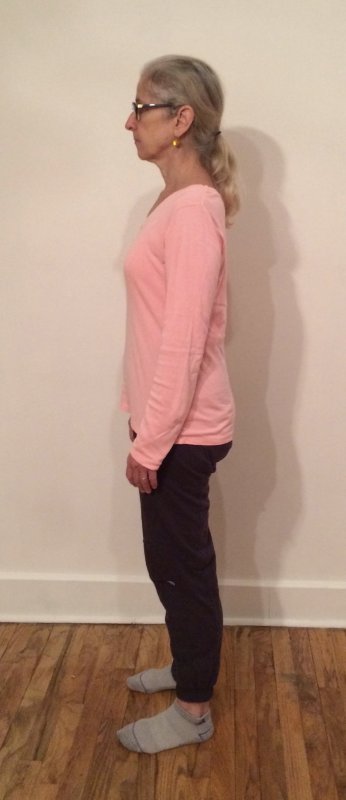
Cynthia Rose (after reading 8 Steps to a Pain-Free Back, but before taking the Gokhale Method Foundations course)
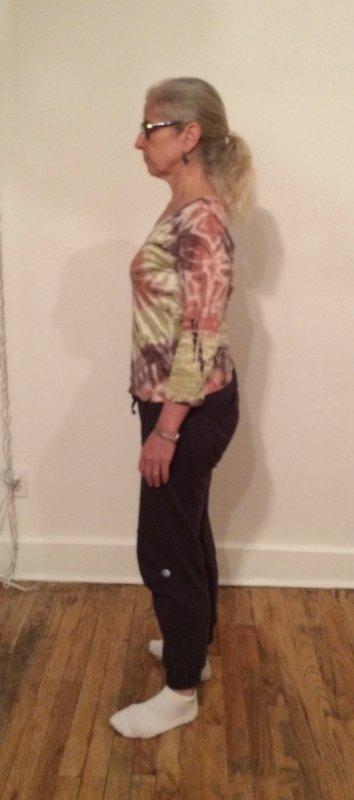
Cynthia Rose after taking the Gokhale Method Foundations course
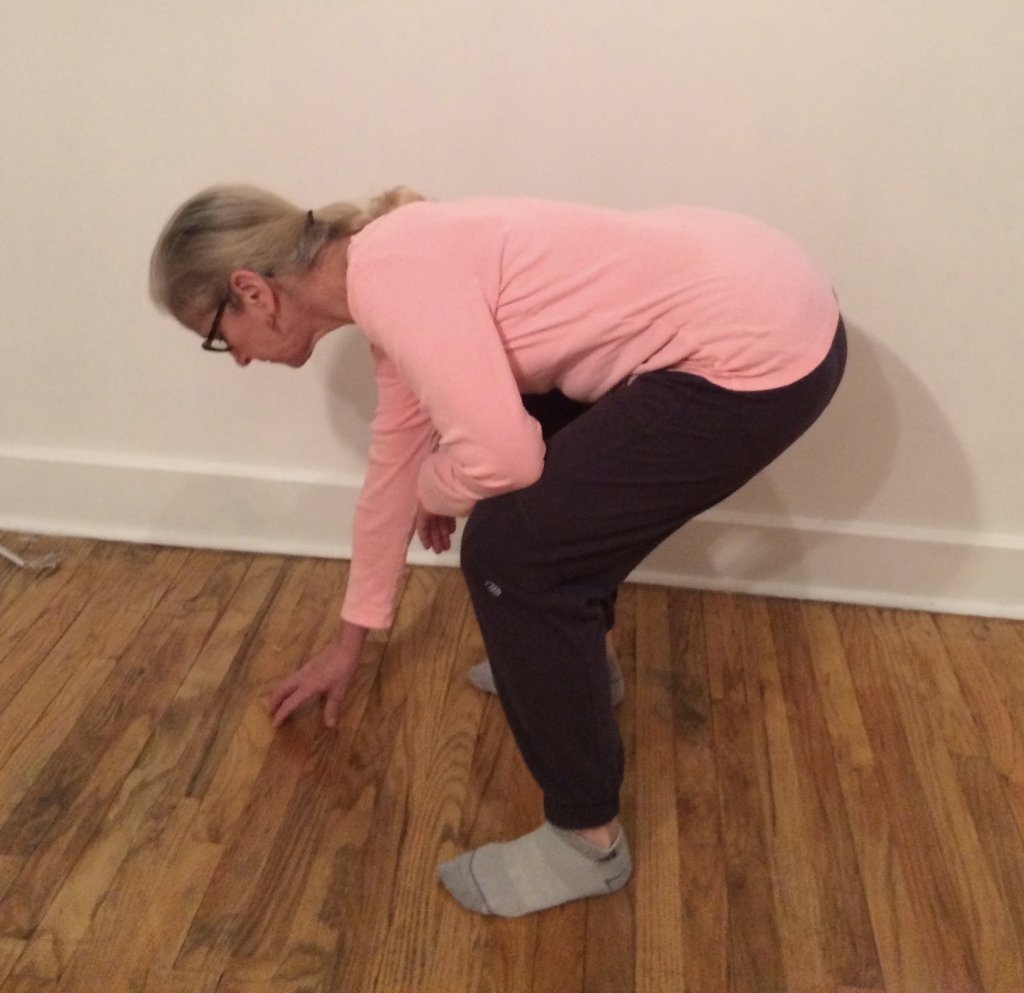 Cynthia Rose bending (after reading 8 Steps to a Pain-Free Back, but before taking the Gokhale Method Foundations course)
Cynthia Rose bending (after reading 8 Steps to a Pain-Free Back, but before taking the Gokhale Method Foundations course)
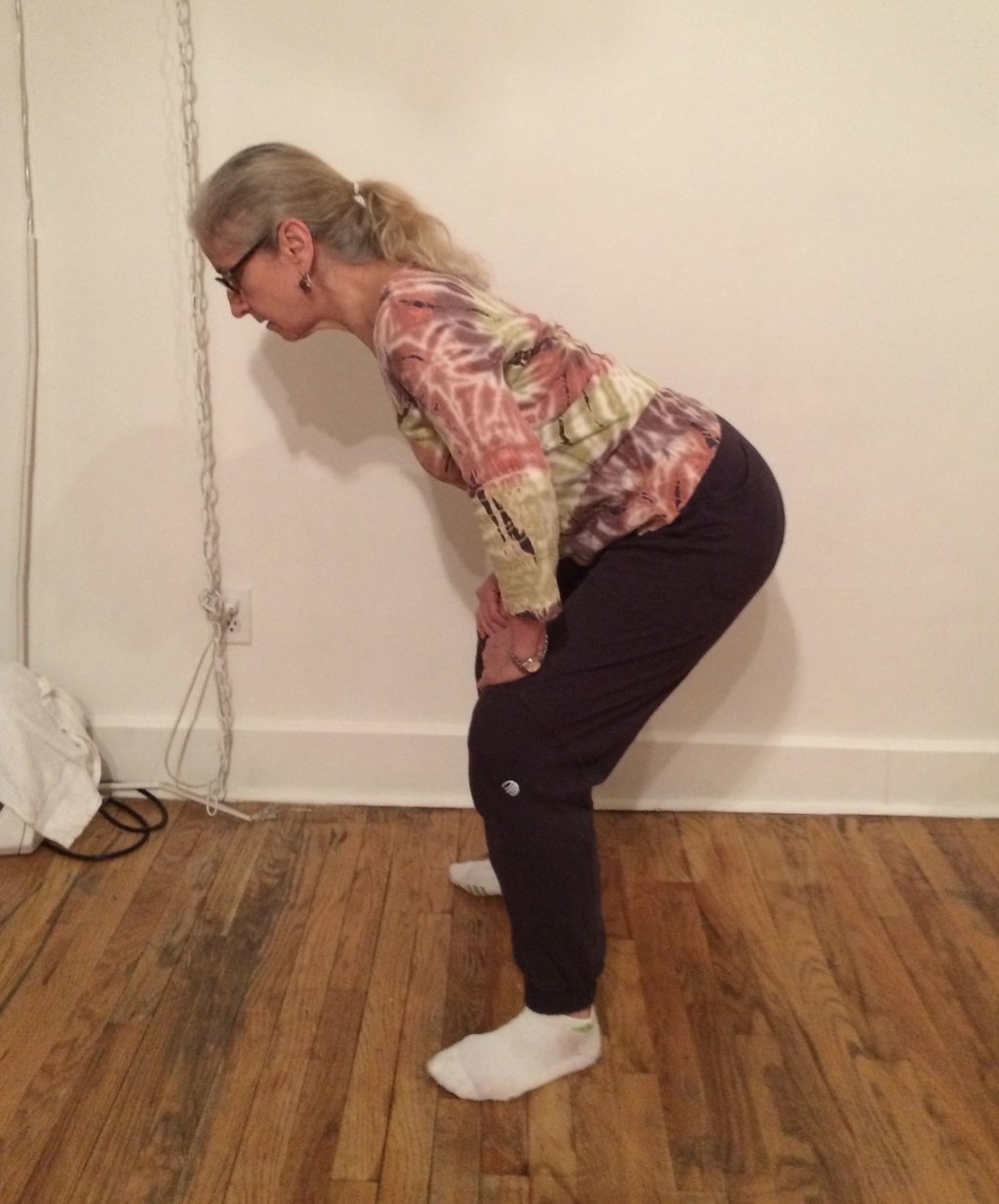
Cynthia Rose bending after taking the Gokhale Method Foundations course
The Gokhale Method teaches how to elongate the spine in both passive positions (such as sitting or lying) and in active techniques like using the inner corset. This elongation changes the shape of the scoliotic curves in the spine and puts a positive stressor on the bones and muscles allowing them to change in a positive way. For me, this quickly translated to less pain and, over time, I can feel the changes in the muscles on either side of my spine. The pictures below show my back without and then with my inner corset engaged.
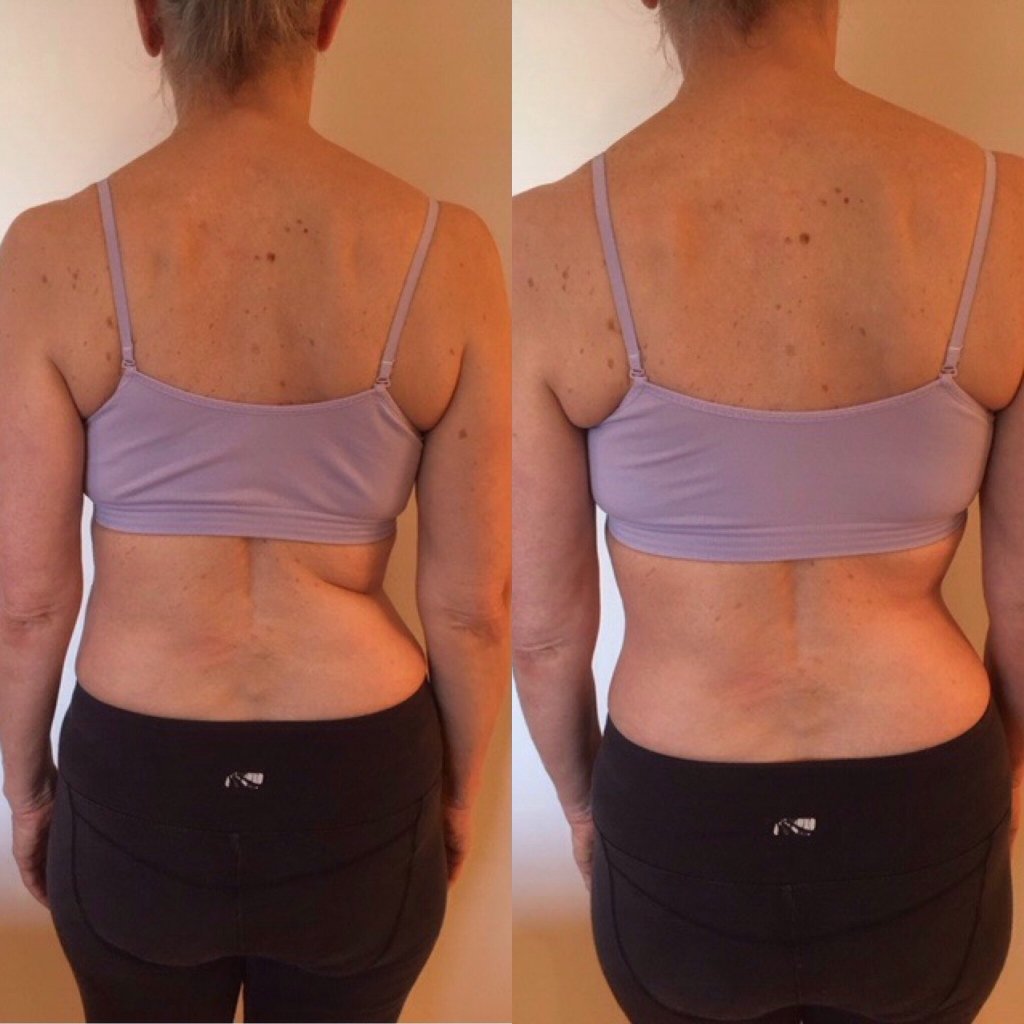
Gokhale Method teacher Cynthia Rose shows a view of her scoliosis with the inner corset (right) and without (left)
The Schroth exercises taught me what it felt like to have my curves evened out and my rotations untwisted. I continued doing the exercises for a while. They involved a lot of props (poles, cushions, multiple chairs) and eventually felt too complicated to continue wth them. The Gokhale Method taught me how to move with healthy posture to prevent wear and tear on my structure and reduce my pain. I was able to use what I learned throughout my day and night, withot taking time out to do so.
Not everyone who has scoliosis has pain - I didn’t until my late 30’s. Pain is now one of my reminders to check how I’m using my body; I also use mirrors and my reflection in store windows to take a glance at the shape of my spine. Often, I see the return of my old habit of tucking my pelvis or rounding of my shoulders; I can easily make corrections.
People-watching has become a hobby of mine. The primal posture we teach in the Gokhale Method can readily be seen in people who are from a non-industrialized environment. I live in NYC so there are many of these beautiful people for me to learn from.
The work has had such a profound effect on me, that in 2015 I trained to become a teacher of the Gokhale Method. It has been a valuable asset for many of my acupuncture patients who have chronic or recurrent pain. I am able to teach them posture using the Gokhale Method language I have trained in. It is exciting to be able to communicate with depth and clarity what I use for myself to someone else and to see the changes that can happen in their bodies.
I enjoy being a part of the network of over 50 Gokhale Method teachers around the world all trained by Esther Gokhale. Though her book 8 Steps to a Pain Free Back is a good way to begin changing posture, Esther always recommends getting hands-on instruction from a qualified teacher. I, like many of my colleagues, am available to travel, as well as to answer questions you might have.

Comments
I am 67 years old, have
I am 67 years old, have scoliosis (not diagnosed until after I was 40), osteopenia, and recently had a total hip replacement of my right hip. I am recovering well but still have low and mid-back pain, especially in the evening. I have had the book Eight Steps to a Healthy Back for several years. I can see that I need to improve my posture, and believe that the changes outlined in the book would help my pain tremendously, but when I get to the inner corset lesson, I get stuck. I would like to take a foundations course. How long after my surgery should I wait in order to benefit most from the class?
As soon as you are able to do
As soon as you are able to do ordinary daily activiies like sit, stand, bend, and walk - you're ready for our course. Naturally, your teacher will know how recently you had surgery and will temper the instructions accordingly. It's very challenging to learn a kinesthetic thing (whether it's tennis, golf, piano, or posture) from a book - it's best to get a qualified teacher to show you, make tweaks, give you feedback.
Cynthia, Do you think that
Cynthia,
Do you think that you could have absorbed the Gokhale Method Foundations course techniques when you were 12 (if they had been developed then).
thanks,
Cecily
I think that the way we teach
I think that the way we teach the class a 12 year old could learn alot about how to use her body throughout the day. Especially if she took the course with a parent and maybe another mother/child that she sees every day. It's very easy , when you have scoliosis to sit or stand while shortening one side of the back or the other. It feels comfortable, but so does stacking the spine well, so its important to learn how to do it.
Cynthia
Thank you. That's a good
Thank you. That's a good point to have a peer and a parent to help reinforce the learning from class.
Add New Comment
Login to add commment
Login